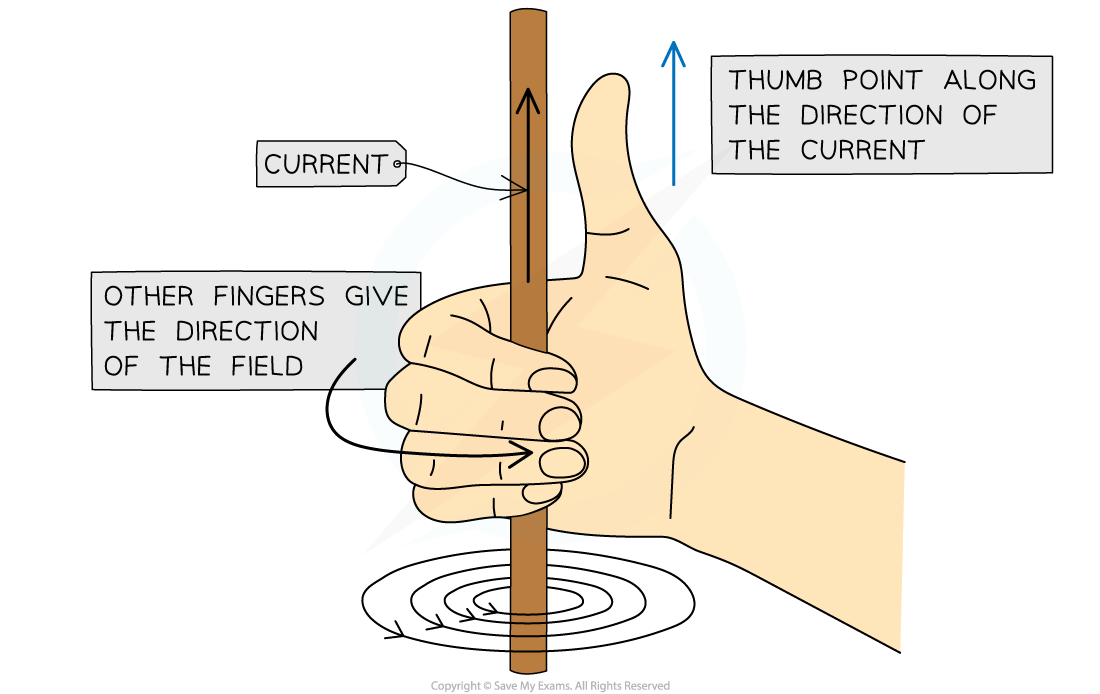Magnetic Effect of a Current (Oxford AQA IGCSE Combined Science Double Award): Revision Note
Exam code: 9204
Magnetic Field of a Current-Carrying Wire
When a current flows through a conducting wire a magnetic field is produced around the wire
A conducting wire is any wire that has current flowing through it
The magnetic field is made up of concentric circles in a plane perpendicular to the wire
As the distance from the wire increases the circles get further apart
This shows that the magnetic field is strongest closest to the wire and gets weaker as the distance from the wire increases
Magnetic field lines around a current-carrying wire

The right-hand thumb rule can be used to work out the direction of the magnetic field
Right-hand thumb rule

If there is no current flowing through the conductor there will be no magnetic field
Increasing the amount of current flowing will increase the strength of the magnetic field
This means the field lines will become closer together
Increasing the current through the wire

Reversing the direction in which the current flows through the wire will reverse the direction of the magnetic field
This is made apparent by changing the direction of the thumb in the right-hand rule
Changing current direction

Examiner Tips and Tricks
When drawing these field lines around a wire, make sure it is clear the lines become further apart with increasing distance from the wire, it is better to exaggerate this for the examiner.
Magnetic Field of a Solenoid
When a wire is looped into a coil, the magnetic field lines circle each part of the coil, passing through the centre of it
Magnetic field around a loop of wire

To increase the strength of the magnetic field around the wire it can be coiled to form a solenoid
The magnetic field around the solenoid is similar to that of a bar magnet
Magnetic field around a solenoid

The magnetic field inside the solenoid is strong and uniform
One end of the solenoid behaves like the north pole of a magnet; the other side behaves like the south pole
To work out the polarity of each end of the solenoid it needs to be viewed from the end
If the current is travelling around in a clockwise direction then it is the south pole
If the current is travelling around in an anticlockwise direction then it is the north pole
If the current changes direction then the north and south poles will be reversed
If there is no current flowing through the wire then there will be no magnetic field produced around or through the solenoid
Direction of current flow in a solenoid


Unlock more, it's free!
Did this page help you?